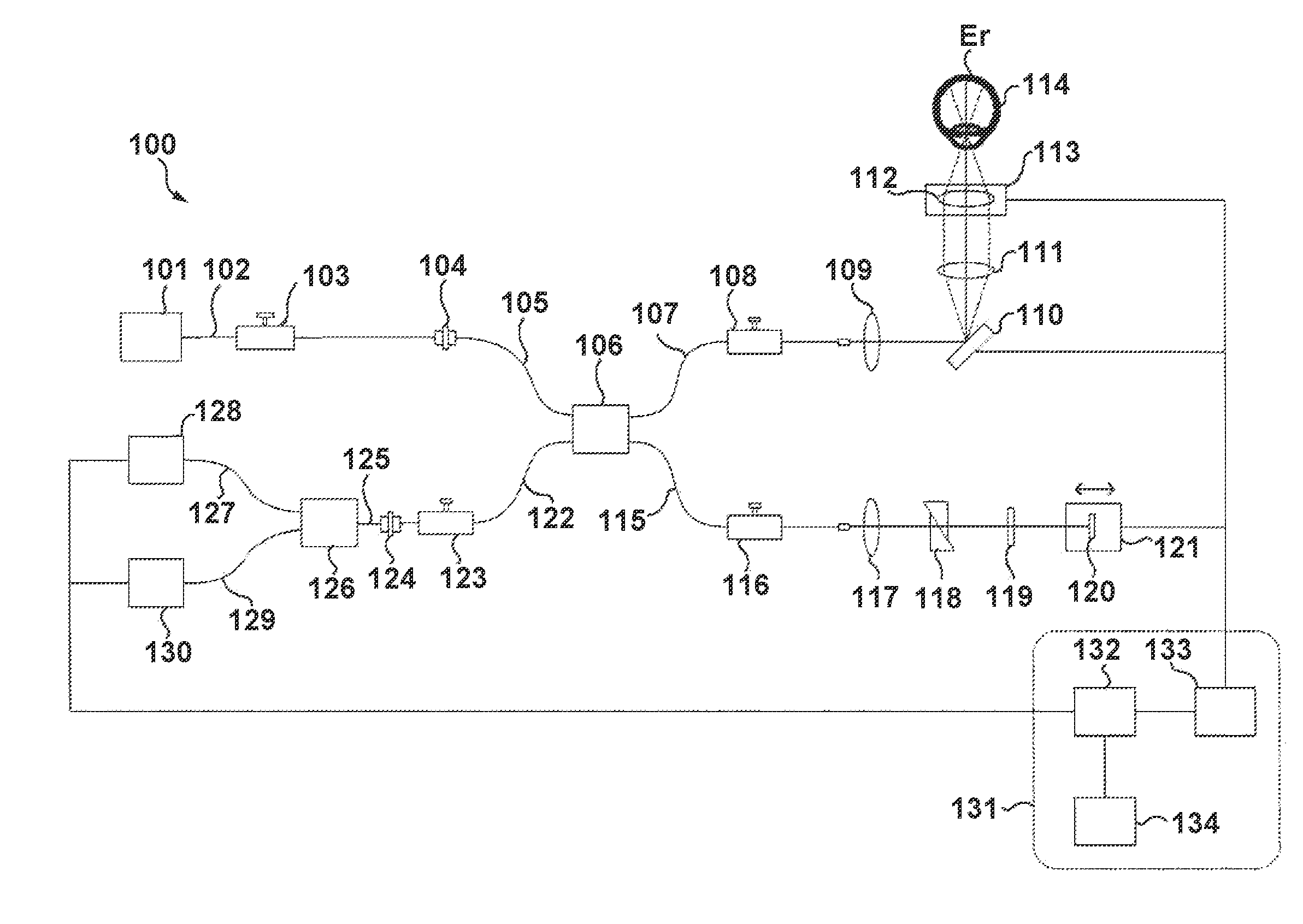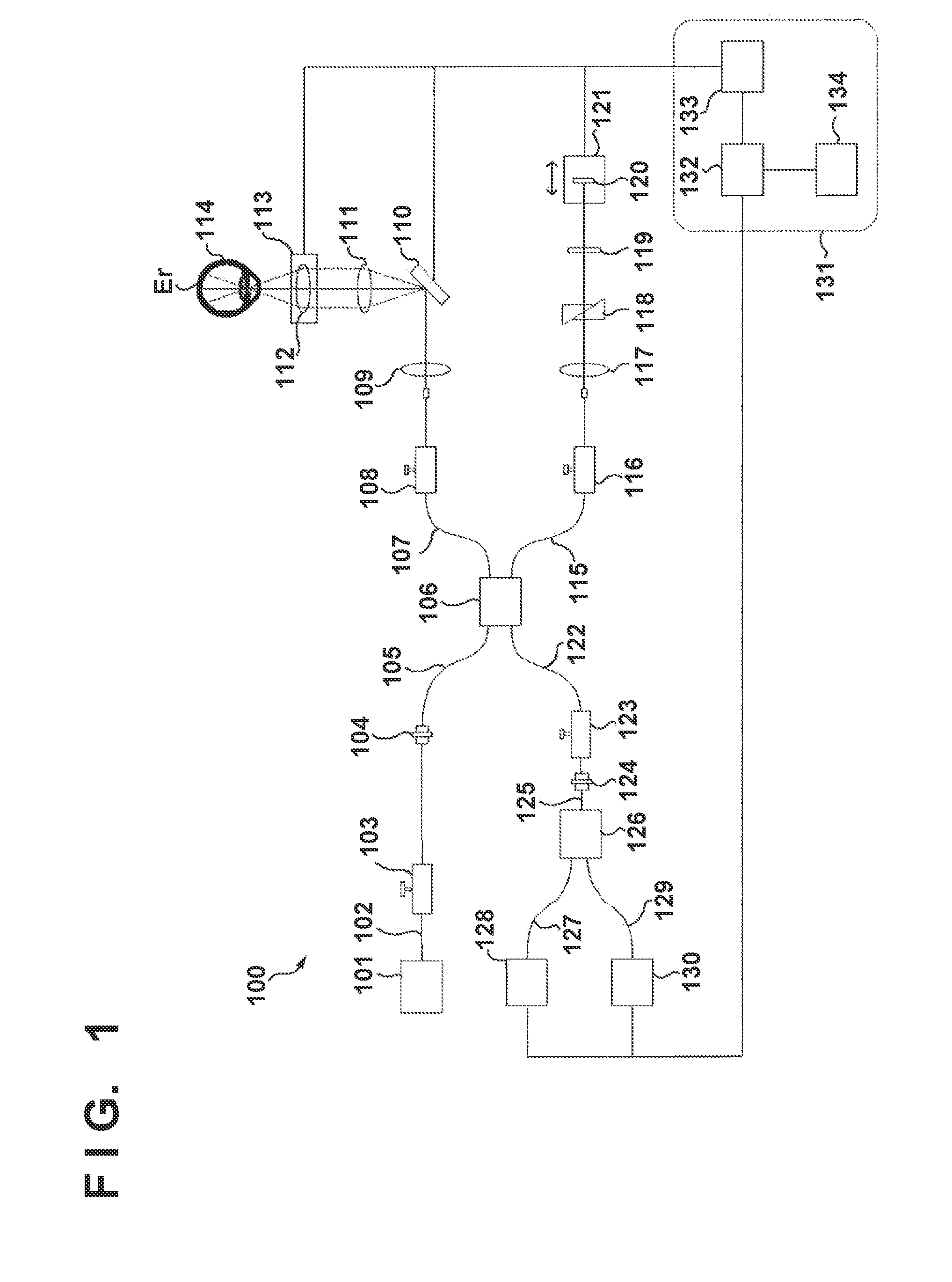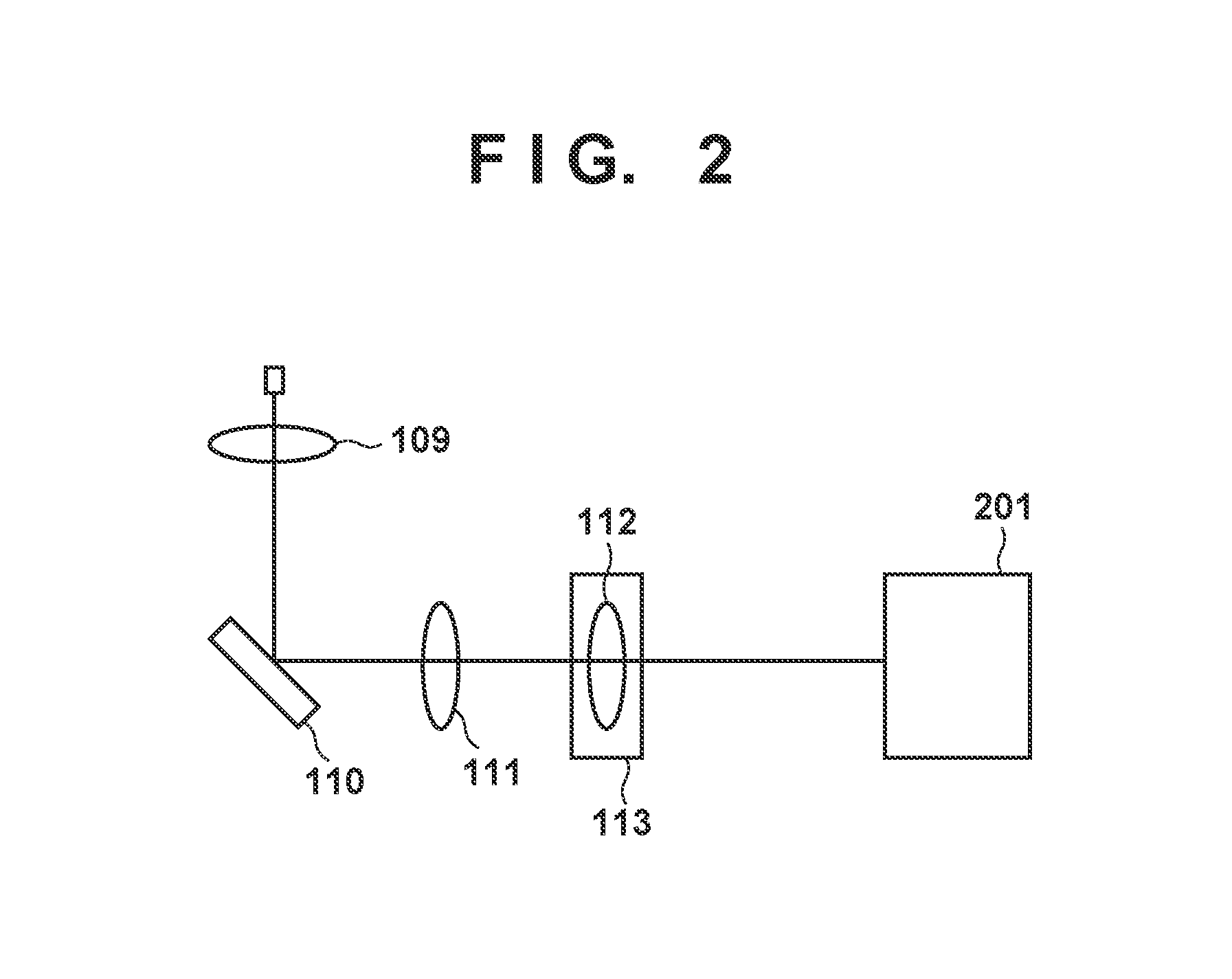Optical coherence tomography system
a coherence tomography and optical coherence technology, applied in the field of optical coherence tomography systems, can solve the problems of unable to easily accept additional components and add an additional polarization-oct-image capture function, and the components such as pm fibers, wave plates, and eoms are extremely expensive, and achieve the effect of low cost, easy addition of polarization-oct-capturing functions, and small siz
- Summary
- Abstract
- Description
- Claims
- Application Information
AI Technical Summary
Benefits of technology
Problems solved by technology
Method used
Image
Examples
first embodiment
[0025]A configuration of a polarization-sensitive OCT system according to the embodiment will be described referring to FIG. 1.
[Entire Configuration of System]
[0026]FIG. 1 is a schematic diagram of the entire configuration of the polarization-sensitive OCT system according to the embodiment. In this embodiment, the configuration of a spectral domain (SD)-OCT system is described.
100>
[0027]The Polarization-Sensitive OCT System 100 according to the first embodiment includes a plurality of single mode fibers and a plurality of polarization controllers, wherein at least one of the plurality of polarization controllers is disposed on each of the fibers of the interferometer, which include a fiber (107) for a measurement light beam, a fiber (115) for a reference light beam, and a fiber (122) near a detector. An image forming unit (132) determines a pixel value from a data set including two orthogonal polarization components concurrently obtained at substantially identical spatial positions...
second embodiment
[0045]In this embodiment, referring to FIGS. 5 and 6, a method for forming a polarization-sensitive OCT system by adding components to a conventional OCT system will be described. In this embodiment, an SS-OCT is used for a light source 501, as an example. Since the basic configuration of an SS-OCT is a publicly-known configuration, the SS-OCT is not described in detail here.
[0046]FIG. 5 illustrates a conventional SS-OCT system. The configuration shown by reference numerals 503 to 518, 520 and 527 to 530 in FIG. 5 are similar to the configuration shown by reference numerals 104 to 119, 121 and 131 to 134 in FIG. 1 respectively. In FIG. 5, 519 are mirrors, 521, 524 and 525 are SM fibers, 523 is a polarization beam splitter as an example of polarization dividing means, 526 is a detector and 531 is a collimator. A detector 526 and SM fibers 524 and 525 are detachable from each other. Additional components are attached only to a portion on an SM fiber 502, which guides light emitted fro...
PUM
 Login to View More
Login to View More Abstract
Description
Claims
Application Information
 Login to View More
Login to View More - R&D
- Intellectual Property
- Life Sciences
- Materials
- Tech Scout
- Unparalleled Data Quality
- Higher Quality Content
- 60% Fewer Hallucinations
Browse by: Latest US Patents, China's latest patents, Technical Efficacy Thesaurus, Application Domain, Technology Topic, Popular Technical Reports.
© 2025 PatSnap. All rights reserved.Legal|Privacy policy|Modern Slavery Act Transparency Statement|Sitemap|About US| Contact US: help@patsnap.com



